Volume 4 | Number 2 | November 2012
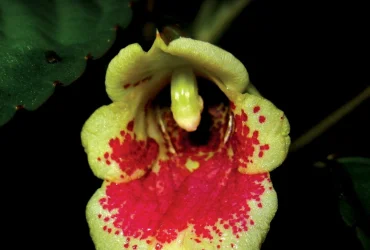 v4i2.77
v4i2.77ISSN: 1800-427X (print)
eISSN: 1800-427X (online)
DOI:10.47605/tapro.v4i2.77
Submitted date: 16 December 2011
Accepted date: 30 April 2012
Published date: 14 November 2012
Pp. 103–104.
Box turtles in and adjacent to Loktak Lake, Manipur – India
R.R. Singh* & K.J. Singh
*E-mail: princerobbin@gmail.com
Manipur is a biodiversity rich state located in the northeastern part of India that borders Myanmar. Situated within the western portion of the Indo-Burma biodiversity hotspot, the state has a large number of endemic and endangered species. The state is also prone to habitat destruction due to rapid clearing of forest for shifting cultivation, which is a common practice in the hill districts for agriculture and collection of firewood and timber. In the valley districts, the entire forest areas were converted to agricultural fields leaving only a few remaining green spaces, such as the sacred groves locally known as Umang Lais, small hillocks, and Keibul Lamjao National Park.
Section Editor: Uwe Fritz
eISSN: 1800-427X (online)
DOI:10.47605/tapro.v4i2.77
Submitted date: 16 December 2011
Accepted date: 30 April 2012
Published date: 14 November 2012
Pp. 103–104.
Box turtles in and adjacent to Loktak Lake, Manipur – India
R.R. Singh* & K.J. Singh
*E-mail: princerobbin@gmail.com
Manipur is a biodiversity rich state located in the northeastern part of India that borders Myanmar. Situated within the western portion of the Indo-Burma biodiversity hotspot, the state has a large number of endemic and endangered species. The state is also prone to habitat destruction due to rapid clearing of forest for shifting cultivation, which is a common practice in the hill districts for agriculture and collection of firewood and timber. In the valley districts, the entire forest areas were converted to agricultural fields leaving only a few remaining green spaces, such as the sacred groves locally known as Umang Lais, small hillocks, and Keibul Lamjao National Park.
Section Editor: Uwe Fritz
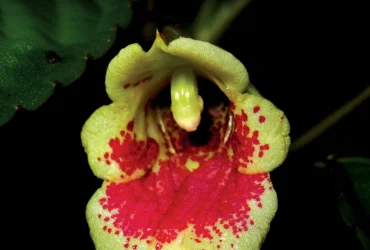 v4i2.76
v4i2.76ISSN: 1800-427X (print)
eISSN: 1800-427X (online)
DOI:10.47605/tapro.v4i2.76
Submitted date: 15 December 2011
Accepted date: 24 September 2012
Published date: 14 November 2012
Pp. 92–102.
Historical land-use patterns in relation to conservation strategies for the Riverstone area, the Knuckles massif, Sri Lanka: insights gained from the recovery of anuran communities
Senarathge R. Weerawardhena* & Anthony P. Russell
*E-mail: zoosrw@kln.ac.lk
Agriculture on the Indian sub-continent dates back to the fourth and third millennia BC, but only in more recent times did its intensity escalate in a major way. During the colonial era, the British established that the hilly areas of Sri Lanka were suitable for the rearing of coffee (Coffea arabica), for which much of the arable land of the island was extensively cultivated. Later, however, resulting from the severe impact of “Coffee Rust,” caused by the fungus Hemileia vastatrix, the coffee industry of Sri Lanka declined dramatically. Former coffee plantations were abandoned, but are still distinguishable as damaged areas. The truncation of coffee growing on the island created vacant room for another cash-crop.
Section Editor: Lee E. Harding
eISSN: 1800-427X (online)
DOI:10.47605/tapro.v4i2.76
Submitted date: 15 December 2011
Accepted date: 24 September 2012
Published date: 14 November 2012
Pp. 92–102.
Historical land-use patterns in relation to conservation strategies for the Riverstone area, the Knuckles massif, Sri Lanka: insights gained from the recovery of anuran communities
Senarathge R. Weerawardhena* & Anthony P. Russell
*E-mail: zoosrw@kln.ac.lk
Agriculture on the Indian sub-continent dates back to the fourth and third millennia BC, but only in more recent times did its intensity escalate in a major way. During the colonial era, the British established that the hilly areas of Sri Lanka were suitable for the rearing of coffee (Coffea arabica), for which much of the arable land of the island was extensively cultivated. Later, however, resulting from the severe impact of “Coffee Rust,” caused by the fungus Hemileia vastatrix, the coffee industry of Sri Lanka declined dramatically. Former coffee plantations were abandoned, but are still distinguishable as damaged areas. The truncation of coffee growing on the island created vacant room for another cash-crop.
Section Editor: Lee E. Harding
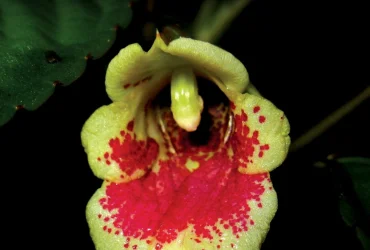 v4i2.75
v4i2.75ISSN: 1800-427X (print)
eISSN: 1800-427X (online)
DOI:10.47605/tapro.v4i2.75
Submitted date: 24 August 2012
Accepted date: 8 September 2012
Published date: 14 November 2012
Pp. 88–91.
The Nasalis Affair
Lee E. Harding*
*E-mail: harding@sciwrite.ca
Baron Friedrich van Wurmb (1781) is credited with the first description of the proboscis monkey, endemic to Borneo, which he named Cercopithecus [now Nasalis] larvatus. This was in a paper read to The Society of Batavia, modern day Jakarta, Indonesia, and later published in the Society’s Memoirs. But he was not the first.
Section Editor: Colin Groves
eISSN: 1800-427X (online)
DOI:10.47605/tapro.v4i2.75
Submitted date: 24 August 2012
Accepted date: 8 September 2012
Published date: 14 November 2012
Pp. 88–91.
The Nasalis Affair
Lee E. Harding*
*E-mail: harding@sciwrite.ca
Baron Friedrich van Wurmb (1781) is credited with the first description of the proboscis monkey, endemic to Borneo, which he named Cercopithecus [now Nasalis] larvatus. This was in a paper read to The Society of Batavia, modern day Jakarta, Indonesia, and later published in the Society’s Memoirs. But he was not the first.
Section Editor: Colin Groves
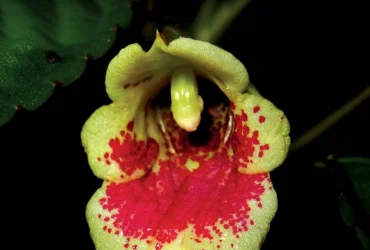 v4i2.74
v4i2.74ISSN: 1800-427X (print)
eISSN: 1800-427X (online)
DOI:10.47605/tapro.v4i2.74
Submitted date: 4 July 2012
Accepted date: 18 August 2012
Published date: 14 November 2012
Pp. 83–87.
GROUP-SIZE AND AGE-SEX COMPOSITION OF NILGIRI LANGUR Trachypithecus johnii (PRIMATES: CERCOPITHECIDAE) IN INDIA
Debahutee Roy*
*E-mail: moni.roy8@gmail.com
Abstract
Group size and group composition of Nilgiri langur (Trachypithecus johnii) was studied in two habitats of Parambikulam Tiger Reserve, Kerala, India. Group size and age-sex composition data was collected during scan sampling, 18 monitoring transect lines, road-strip count, and direct encounter of the groups. Mean group size value significantly differ between moist deciduous forest and evergreen forest. Group size was varied from 2 to 22. The maximum group size, 22 was recorded in evergreen forest habitat. The mean group size of Nilgiri langur is less in moist deciduous forest and higher in evergreen forest.
Key words : Demographic parameters, colobines, Parambikulam Tiger Reserve, Western Ghats.
Section Editor: Colin A. Chapman
eISSN: 1800-427X (online)
DOI:10.47605/tapro.v4i2.74
Submitted date: 4 July 2012
Accepted date: 18 August 2012
Published date: 14 November 2012
Pp. 83–87.
GROUP-SIZE AND AGE-SEX COMPOSITION OF NILGIRI LANGUR Trachypithecus johnii (PRIMATES: CERCOPITHECIDAE) IN INDIA
Debahutee Roy*
*E-mail: moni.roy8@gmail.com
Abstract
Group size and group composition of Nilgiri langur (Trachypithecus johnii) was studied in two habitats of Parambikulam Tiger Reserve, Kerala, India. Group size and age-sex composition data was collected during scan sampling, 18 monitoring transect lines, road-strip count, and direct encounter of the groups. Mean group size value significantly differ between moist deciduous forest and evergreen forest. Group size was varied from 2 to 22. The maximum group size, 22 was recorded in evergreen forest habitat. The mean group size of Nilgiri langur is less in moist deciduous forest and higher in evergreen forest.
Key words : Demographic parameters, colobines, Parambikulam Tiger Reserve, Western Ghats.
Section Editor: Colin A. Chapman
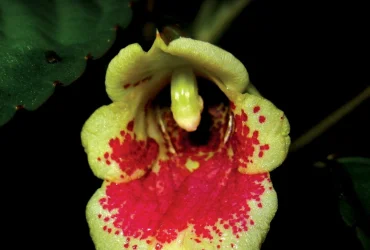 v4i2.73
v4i2.73ISSN: 1800-427X (print)
eISSN: 1800-427X (online)
DOI:10.47605/tapro.v4i2.73
Submitted date: 24 January 2012
Accepted date: 27 June 2012
Published date: 14 November 2012
Pp. 77–82.
BREEDING ECOLOGY OF THE CRESTED SERPENT EAGLE Spilornis cheela (LATHAM, 1790) (AVES: ACCIPITRIFORMES: ACCIPITRIDAE) IN KOLLI HILLS, TAMIL NADU, INDIA
Varadarajan Gokula*
*E-mail: gokulae@yahoo.com
Abstract
The breeding ecology of the crested serpent eagle (Spilornis cheela), focusing on nest-site selection, food habits, and perch-site preference, was studied in the Kolli Hills of Tamil Nadu, India, from May 2005 to May 2010. Thirty-two active nests were located, with nest-site details collected from 27 nests that were accessible. The crested serpent eagle did not construct new nests, but did renew or alter old nests, mainly in December. Both sexes were involved in the nest renewal activities. The clutch size was one, the mean incubation period was 41.5 days, and the mean fledging period was 64.5 days. Nests were found largely along riverine patches. The results indicate the mature and less disturbed riverine forests with large sized trees are critical for the breeding and conservation of this species. The food habits of the eagle were known from prey items brought into the nest by the adult to feed the chick and prey items fed on by the adult. In total, 173 feeding observations were made and the prey items belonged to 17 species of vertebrates. The crested serpent eagle largely preferred reptiles, which accounted for 74% of their diet, followed by birds, which accounted for 18% of their diet. A total of 1237 perching records were observed. The crested serpent eagle preferred to perch on the outer canopy of the trees found largely in the forest edges.
Key words : Clutch size, prey preference, perching preference, nesting behaviour, raptors, avian ecology, Indian biodiversity.
Section Editor: Sujan Henkanaththegedara
eISSN: 1800-427X (online)
DOI:10.47605/tapro.v4i2.73
Submitted date: 24 January 2012
Accepted date: 27 June 2012
Published date: 14 November 2012
Pp. 77–82.
BREEDING ECOLOGY OF THE CRESTED SERPENT EAGLE Spilornis cheela (LATHAM, 1790) (AVES: ACCIPITRIFORMES: ACCIPITRIDAE) IN KOLLI HILLS, TAMIL NADU, INDIA
Varadarajan Gokula*
*E-mail: gokulae@yahoo.com
Abstract
The breeding ecology of the crested serpent eagle (Spilornis cheela), focusing on nest-site selection, food habits, and perch-site preference, was studied in the Kolli Hills of Tamil Nadu, India, from May 2005 to May 2010. Thirty-two active nests were located, with nest-site details collected from 27 nests that were accessible. The crested serpent eagle did not construct new nests, but did renew or alter old nests, mainly in December. Both sexes were involved in the nest renewal activities. The clutch size was one, the mean incubation period was 41.5 days, and the mean fledging period was 64.5 days. Nests were found largely along riverine patches. The results indicate the mature and less disturbed riverine forests with large sized trees are critical for the breeding and conservation of this species. The food habits of the eagle were known from prey items brought into the nest by the adult to feed the chick and prey items fed on by the adult. In total, 173 feeding observations were made and the prey items belonged to 17 species of vertebrates. The crested serpent eagle largely preferred reptiles, which accounted for 74% of their diet, followed by birds, which accounted for 18% of their diet. A total of 1237 perching records were observed. The crested serpent eagle preferred to perch on the outer canopy of the trees found largely in the forest edges.
Key words : Clutch size, prey preference, perching preference, nesting behaviour, raptors, avian ecology, Indian biodiversity.
Section Editor: Sujan Henkanaththegedara
Hubungi Kami
The ultimate aim of the journal is to provide an effective medium for communication of the latest and best scientific information.
Copyright © 2020 Taprobanica. All Rights Reserved
Jasa Pembuatan Website by IKT




